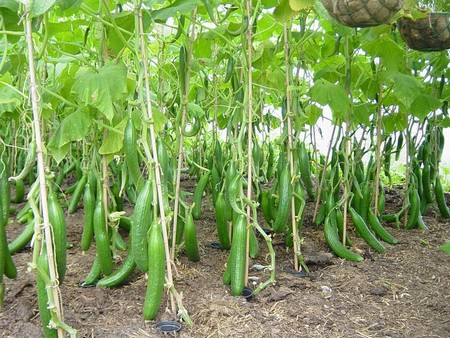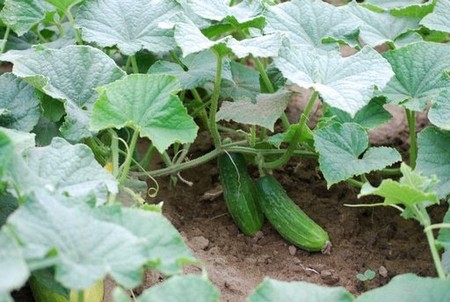Best Way to Prevent Problems When Growing Cucumber
The main problems with growing cucumbers in a greenhouse are powdery mildew disease, spider mites and whitefly. Outdoors, powdery mildew and mosaic virus are the main problems. Powdery mildew manifests as white powdery patches across the leaves. This disease is worst in hot, dry conditions and when plants are crowded and stressed.
It can be controlled with a systemic fungicide, but you may prefer not to use pesticides, especially near to harvest time. Keep the plants well watered in hot spells, but avoid wetting the leaves. Open the vents on hot days and give the plants plenty of room.
Some cucumber varieties are resistant to powdery mildew and are worthwhile if the disease is a regular occurrence. Spider mites are minute, spider-like creatures that are only just visible to the naked eye. They can build up rapidly, unnoticed, on the undersides of the leaves. The first signs are likely to be a speckling on the upper surface of the leaves caused by their feeding. A severe infestation will result in masses of fine webbing and the leaves will start to yellow and die.
You can spray with an insecticide based on pyrethrum, which is the only option if outdoor cucumbers are attacked. In the greenhouse you can also use biological control. This is quite expensive, but involves introducing a larger predatory mite (available from mail-order specialists). You need to introduce the control as soon as the first signs of the pest are seen. Thereafter, keep the greenhouse at a temperature of at least 21°C. Check new leaves with a hand lens – they should be free of spider mites.
Keeping the greenhouse humid, by regularly damping down the paths, will help to control spider mites.
Whitefly are tiny white flies that settle on the undersides of leaves. The larvae are immobile scales that feed on the sap and produce honeydew, a substance which makes the leaves sticky and encourages a black mould to grow. Whitefly are very persistent, so if you use a pyrethrum insecticide, spray every three days until the infestation is under control.
A biological control for whitefly is also available – a tiny wasp called encarsia that parasitises the scales. This can be ordered from mail-order suppliers. It usually arrives as parasitised whitefly scales glued to a small card or loose in a small tube. The parasitic wasps hatch out and start to lay their eggs in whitefly scales. When parasitised, the scales turn black, so you can follow the progress of the biological control with a hand lens over the next few weeks. Encarsia works best at a temperature of 18″C.
Categories
Advertisements
Recent Articles
 How to Understand Bed Sizes – A Small Guide
How to Understand Bed Sizes – A Small Guide How to Select Some Must Have Kitchen Accessories
How to Select Some Must Have Kitchen Accessories Best Way to Change a Car Tire
Best Way to Change a Car Tire Best Way to Write an Affirmation
Best Way to Write an Affirmation Best Way to Take Charge of Your Financial Life
Best Way to Take Charge of Your Financial Life Best Way to Survive a Party When You Don’t Know Anyone
Best Way to Survive a Party When You Don’t Know Anyone Best Way to Stop Self Sabotaging Yourself
Best Way to Stop Self Sabotaging Yourself Best Way to Start Journal Writing
Best Way to Start Journal Writing Best Way to Speak with a Powerful Voice
Best Way to Speak with a Powerful Voice Best Way to Simplify Your Life
Best Way to Simplify Your Life Best Way to Respond to a Put-Down
Best Way to Respond to a Put-Down Best Way to Reduce Acne Breakouts
Best Way to Reduce Acne Breakouts Best Way to Recover from Dining Disasters
Best Way to Recover from Dining Disasters Best Way to Quit Your Job Gracefully
Best Way to Quit Your Job Gracefully Best Way to Make Your Own Website
Best Way to Make Your Own Website



Leave a Reply